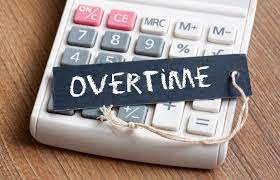In most companies, you’ll find an option called “Customer Paid Overtime” on the pay runs of hourly workers. This provides you a way to pay for employee time. Sometimes you’ll see it as “Project Profits”, just put your number in there. The benefits will be extra hours worked and a pay increase by an amount that you set.
If you use hourly staff for any aspect of your business, I think you should see this option as an addition to the services offered you to encourage employee retention and only to consider it an additional “Billing” and not completely the voice of your business; after all there are a lot of reasons why you want to remove billing from your services offerings.
Let’s take as an example a retail business running 16 hours a day seven days a week in good weather and a nice place to have groceries. You decide to give your employee a payoff for every hour they work. The pay would be commensurate with their wage, excepting for 15 hour days when you charge for two periods of time. You would also cover for vacations as well. Well, lets say 20 hours a week. So 60 hours a year would be your “ibrarian’s” pay.
Now you have 40 hours during that week to cover all the normal business duties in your store. That is for 2 people doing the actual work in your store. Lets keep things simple here. Let’s say that your following the standard workday of 10 hours, 40 hours air conditioning, 8 hours lunch, 10 hours sharpening, and a closing time of 5 hours. Now that you have simulated your business’s duties, over and above four hours of your day, or just on the job-time-wise that you charge for, one hour of overtime for one of your staff. Another way, would be if someone actively worked up an appetite to check out your store, well that would be one of your employees time and paid into the payroll.
Here is what we will do:
- Make one staff do their lost time off. We use a time block of 60 hours per week for this.
- Take 60 hours out of 60 and pay a time wage of $15.00 per hour ( 40 hrs)
- Leave enough time for your normal work duties. There should be double the number of hours to account for lunch. This way it is fair but only gives time to do other things in the store.
- Rate your employee and add a 10% towards payroll. Using this you can keep your normal hourly wage but you are only paying for the extra hours done.
Now that you have hourly wage and the hourly wage itself and a salary rate you are no losing anything, except time spent. Putting in extra time for a special project pays money in real dollars, and it gives you a paid canvass for their trade. You then give that time to the appropriate person to help create an extra word of mouth marketing strategy or other method of selling. and lets you retain good, loyal and satisfied customers.
Dibaca juga : How Iimate Odds of Winning Powerball
Many companies wonder why every time they hire someone they pay on the down roll. Well, It may cost you 3 extra hours in the beginning, but the job gets done. People are familiar with what they know and its applicable to them, unlike marketingandtraining, which may take longer, but it cuts time and saves money.
I hope this article has been illustrative. Payroll time can be very short and cut you a lot of time in expenses. This is a really good vehicle for hiring new employees when you use not a salary, but a hourly wage and make each person an extra employee. They can grow along with your business, working together and growing.
